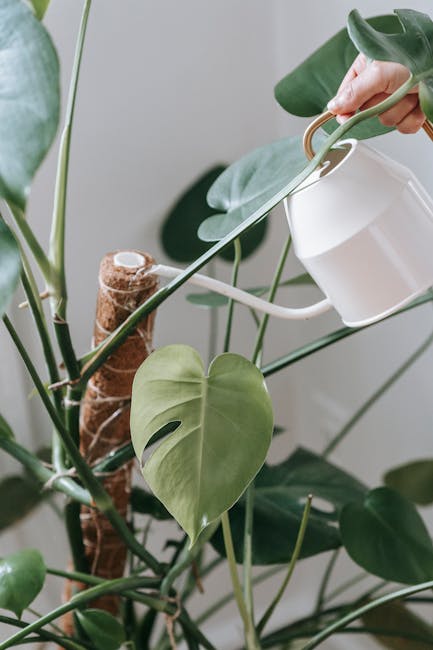Indoor Plant Care: Watering Tips and Techniques
Welcome to the world of indoor gardening! 🌿 Whether you’re a seasoned botanist or just starting your green-thumb journey, understanding how to properly water your indoor plants is crucial for their health and vitality. In this blog post, we’ll dive into essential watering tips and techniques to ensure your indoor plants thrive. Let’s get started!
Table of Contents
1. Understanding Your Plant’s Needs
2. Best Watering Practices
3. Common Watering Mistakes
4. Conclusion
5. FAQs
Understanding Your Plant’s Needs 🌱
Before you even think about watering your plants, it’s essential to understand their specific needs. Different plants have different requirements, so a one-size-fits-all approach won’t work. Research your plant species to determine how much and how often they require watering. Some plants, like succulents, prefer to dry out completely between waterings, whereas others, such as ferns, thrive in consistently moist soil.
Get to know your plant’s native environment to mimic those conditions in your home. For instance, tropical plants often enjoy higher humidity and more frequent watering compared to desert plants.
Best Watering Practices 💧
Once you know your plant’s specific needs, you can implement the best practices for watering:
1. Check the Soil
Use your finger or a moisture meter to check the soil’s moisture level before watering. If the top inch of the soil is dry, it’s usually time to water. This simple technique can prevent overwatering, which is a common issue for indoor plants.
2. Water Evenly
When watering, ensure you distribute the water evenly across the soil. This helps prevent root rot and encourages even growth. Pour slowly and let the water seep through to the roots.
3. Use the Right Tools
Invest in a good watering can with a long spout for precise watering, especially for plants with dense foliage. This allows you to reach the soil directly without wetting the leaves, which can cause fungal diseases.
4. Consider the Season
Plants often require less water in the winter months when they enter a dormant phase. Be mindful of seasonal changes and adjust your watering schedule accordingly.
Common Watering Mistakes 🚫
Even with the best intentions, mistakes can happen. Here are some common pitfalls to avoid:
1. Overwatering
It’s easy to love your plants too much, but overwatering can suffocate the roots, leading to root rot. Always ensure your pots have drainage holes to prevent water from pooling at the bottom.
2. Underwatering
On the flip side, underwatering can stress the plant, leading to wilted leaves and stunted growth. Regularly check your plant’s soil moisture to avoid this issue.
3. Ignoring Signs of Distress
Pay attention to your plants! Yellowing leaves, soggy soil, or wilting can all be signs of improper watering. Respond accordingly by adjusting your watering routine.
Conclusion
Caring for indoor plants can be a rewarding experience, and mastering the art of watering is a significant step in nurturing a thriving indoor garden. By understanding each plant’s unique needs and avoiding common watering mistakes, you’ll be well on your way to becoming an indoor plant guru. Happy gardening! 🌼
FAQs
1. How often should I water my indoor plants?
The frequency of watering depends on the type of plant, the size of the pot, and environmental factors. Generally, checking the top inch of soil for dryness is a good rule of thumb.
2. Can I use tap water for my plants?
Most plants can handle tap water, but it’s best to let it sit for 24 hours to allow chlorine to evaporate. Sensitive plants might prefer rainwater or distilled water.
3. What are signs of overwatering?
Signs of overwatering include yellowing leaves, wilting, and a mushy texture in the soil. Ensure your pot has good drainage and adjust your watering schedule if you notice these signs.
4. Is it okay to water plants at night?
Watering in the evening can be fine, but avoid watering late at night as it can lead to prolonged wetness, promoting fungal growth. Morning watering is generally recommended.
5. How do I increase humidity for my indoor plants?
You can increase humidity by misting your plants, placing a tray of water near them, or using a humidifier. Grouping plants together also helps maintain a humid environment.





